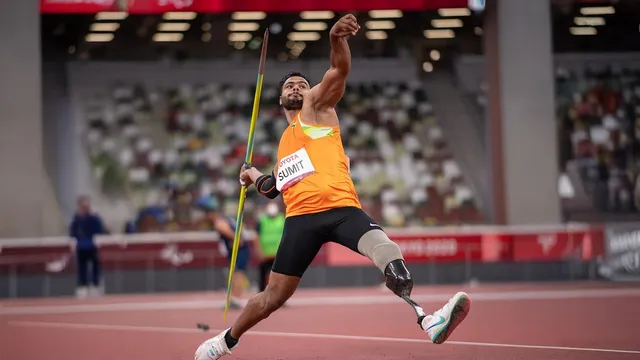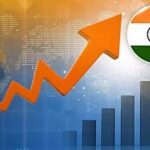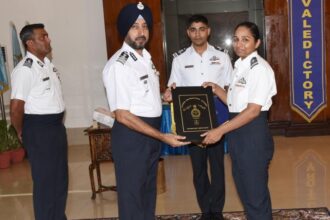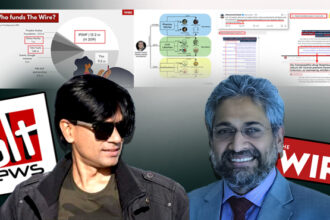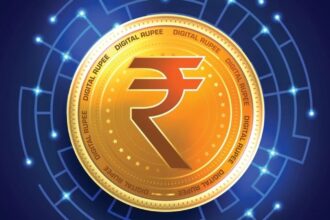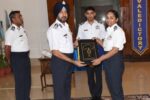Inclusivity is a subject that in the recent past has attracted a cascade of opinions and ideas. It has had its own struggle with stereotypes and conservatism, however, in the midst of it all, it is essential to recognise how inclusive policies and welfare-oriented governance, in the past 8 years have been a significant driving force in the meteoric and astronomical growth of the Indian Para athletes contingent. The past 8 years have epitomised grit, determination and perseverance for generations to come.
What began as a conversation about inclusion has now evolved into a national movement redefining India’s sporting identity. To truly grasp the scale of this transformation, one must trace the journey of India’s para athletes over the past decade.
Despite its vast population, India has long underperformed on the global sporting stage. Yes, the cricket in India is massive, but at the global athletics and olympics level, there have hardly been consistently shining campaigns. Despite not being at the best in the Olympics and the World Athletics Championship, a beacon of resolve has been seen by the Para athletes in the Paralympics and the Para Athletics Championships, who have not only consistently performed, but also constantly upped their game in every global competition. This is a feat that often goes under the radar; the magnificent performances by the Para athletes.
To show the glorious nature of their success, it is necessary to look at the graph of their glories.
In the 2013 IPC Athletics World Championships, India attained only ONE medal.
In 2015, India clinched TWO medals.
In the 2017 World Para Athletics Championships, India upped their tally to FIVE medals.
In 2019, India won NINE medals.
In 2023, India claimed TEN medals.
In 2024 India secured SEVENTEEN medals.
And, in the recently concluded 2025 edition held in New Delhi (also the first games to be held in South Asia), India broke all records and won a massive tally of TWENTY-TWO medals.
The same trend (if not more excellent) is also seen in the Paralympics.
In the 2012 Games, India won a solitary medal.
In 2016, India won FOUR medals.
In 2020, India won NINETEEN medals.
In 2024, India smashed all the records and registered TWENTY-NINE medal wins.
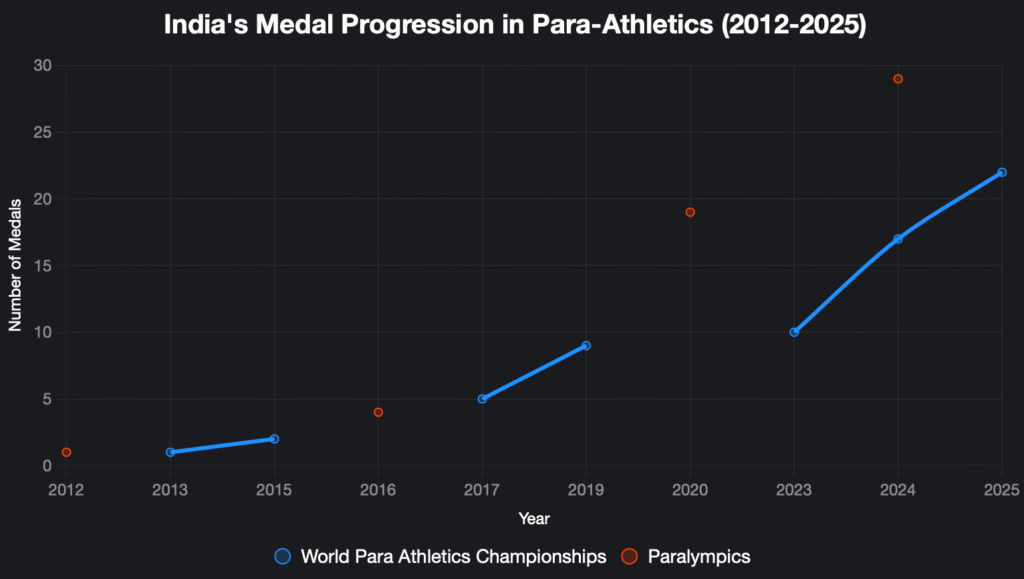
These numbers do not merely represent victories; they chronicle a shift in attitude, infrastructure, and belief. Behind every medal lies a system that learned to support, fund, and celebrate differently-abled athletes with unprecedented seriousness.
This pattern of overwhelming success and undisputed growth has been noteworthy, but what caused this revolution?
For anything to prosper, a strong headed and clear leadership is of utmost importance. Every revolution needs a visionary helm. For Indian para sports, that leadership came from within the athlete community itself with Deepa Malik leading in 2020 and subsequently being succeeded by Devendra Jhajharia.
The government funding improved by multifolds. A 6.28 lakh scholarship per annum started for the Para athletes.
Para athletes were incorporated in the TOPS (Target Olympic Podium Scheme) and were directly funded in excess of 76 crores for the 2024 Paris cycle.
For the period between 2017-18 and 2021-22, over ₹32 crore was allocated to the PCI under the Scheme of Assistance to NSFs and 10.5 crore were well spent on the para-athletes under TOPS.
With the budget for the Ministry of Youth Affairs and sport being at 3794.30 crores, the inflow of money in the para governance has seen a significant jump.
This infusion of funds changed the game. For the first time, para athletes could train, travel, and recover with the same quality of resources as their Olympic counterparts. The numbers tell a story of a government finally recognising potential where it once saw limitation.
Additionally, with the starting of the Khelo India Para Games in 2023, the grassroots level of scouting athletes and the overall competitive environment has improved significantly with 1045 Khelo India centres, out of which 30% are fully para equipped and are spread over 200 districts.
The sporting infrastructure has also been enhanced with the Gandhinagar Para centre standing out as a one of its kind facility, and also various SAI NCoEs (National Centres of Excellence) incorporating retrofitting facilities. Facilities like these transformed training into science, ensuring that excellence was no longer the privilege of a few but the expectation of many.
The coaching system has also seen a revolution with only around 50 trained coaches in 2016, to over 500 in 2025.
The involvement of the Prime Minister in the celebrations of successes and even the recovery post defeats is worthy of acknowledgement. It is time to give these athletes all the credits and support as possible.
The Indian para-sporting story is not one of sympathy, but of supremacy — earned through sweat, structure, and belief.
As India looks ahead to Los Angeles 2028, its para athletes are no longer just participants; they are the torchbearers of a new, inclusive sporting nation.

